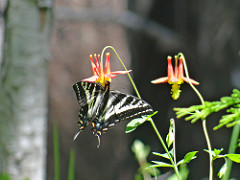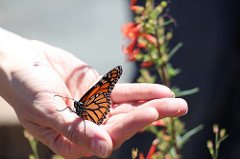Spring is here! Wildflower super blooms are blanketing deserts, native gardens are in full bloom, and our pollinator friends are happy. But there is a need to create year-round gardens and landscapes to help bees, butterflies, birds, bats and other pollinators thrive as their native landscapes are threatened.

PC: USFS
Planting a pollinator garden can be a fun project and can provide a great learning opportunity for youth. Teachers and outdoor educators can integrate pollinator lesson plans into their classroom and outdoor activities in 3 easy steps.
- Introduce your youth to pollinators! Why they are important, what is pollination, who is a pollinator and what can we help them.
- Learn through activities. Use fun interactive learning opportunities to engage them in the learning process. There are many useful resources online that provide activities and lesson plans to teach about pollinators.
- Plant a pollinator garden. Creating a pollinator garden at your school or program site is a great way to provide a first-hand learning environment for youth. Planting an ecoregional pollinator garden is easier than you think.
TYO, in partnership with the US Fish & Wildlife Service, created a learning path to guide you through the 3 steps above. The purpose of this path is to provide outdoor educators and teachers with a comprehensive set of tools and resources to support classroom and outdoor education about pollinators. The path will help you easily integrate pollinator lesson plans, activities and projects into your classroom or program.

PC: USFS
The Million Pollinator Garden Challenge, a campaign by the National Pollinator Garden Network, encourages you to register your garden or landscape to support pollinators. Their website also provides resources for individuals and educators, along with examples of school garden programs and pollinator citizen science programs.
Find out what the buzz is all about and pick a place to plant your seeds!
